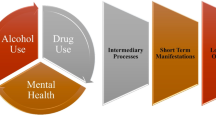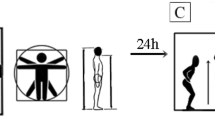Abstract
Skill cheerleading is a sport with high difficulty, high skill and relatively high injury probability. This study mainly discusses the judgment of Cheerleading athletes' action safety in sports competition based on Kohonen neural network. The Kohonen network consists of an input unit layer and a two-dimensional output network of processing units. During the training process, each element competes with other units to obtain each record. When a yuan obtains a record, its weight is adjusted to more closely match the predicted category of the record. The Kohonen neural network's analysis of data is divided into roughly two processes. One is the tentative evaluation process of the network model to obtain the overall pattern of the data, and the other is the process of adjusting and optimizing the network to obtain a better model for the features contained in the data. Athletes' injuries are not only caused by their own factors, but also caused by technical factors, poor protection and improper cooperation. Of course, skill cheerleading is not only difficult, but also includes many people participating in the completion of transition connection and some single person dance combinations, hand position combinations, jumps, etc., which may also become potential factors for athletes' injury. According to the characteristics of skill cheerleading team, the injury of athletes is divided into three parts. The first part is the injury of multi person cooperative action unique to skill cheerleading team, including throwing, lifting, pyramid, top and base in transition and connection. The second part is the injury of difficult somersault completed by a single person. The third part is the factors other than difficulty, including jumping, dance combination and hand position combination. The fuzzy Kohonen clustering algorithm proposed in this study adopts batch processing for motion risk data samples, eliminates the dependence of clustering results on the order of input samples, and makes it suitable for dealing with the problem of fuzziness. Finally, the judgment matrix is introduced to judge the risk index weight of the action safety of skilled cheerleaders in sports competitions. The injury rate of skill cheerleading athletes is different, and the injury rate of somersault difficult movement is 67.92%. The injury rate of external factors such as jumping, dancing and hand position combination was 48.15%. This study will help to provide useful theoretical guidance for the standardized, scientific, sustainable and good development of skill cheerleading team.










Similar content being viewed by others
Explore related subjects
Discover the latest articles and news from researchers in related subjects, suggested using machine learning.References
Kovácsik R, Szabo A (2019) Dynamics of the affective states during and after cheerleading training in female athletes. Pol Psychol Bull 50(1):29–35
Maaranen A, Raalte J, Brewer BW (2019) Mental blocks in artistic gymnastics and cheerleading: longitudinal analysis of flikikammo. J Clin Sport Psychol 14(3):1–38
Angela C, Carolina W, Carlos C (2019) Medical image segmentation using the kohonen neural network. IEEE Lat Am Trans 17(2):297–304
Gontijo E, Watanabe CH, Monteiro ASC et al (2017) Effects of Fe(III) and quality of humic substances on As(V) distribution in freshwater: use of ultrafiltration and Kohonen neural network. Chemosphere 188:208–217
Lisiak P, Rojek I, Twardowski P (2017) Evaluating the reliability of groove turning for piston rings in combustion engines with the use of neural networks. Arch Mech Technol Mater 37(1):35–40
Jamróz D (2020) The experimental study of the effectiveness of Kohonen maps and autoassociative neural networks in the qualitative analysis of multidimensional data by the example of real data describing coal susceptibility to fluidal gasification. Neural Comput Appl 32(18):15221–15235
Yong L, Gang C, Chen X et al (2019) Coal-rock interface recognition based on permutation entropy of LMD and supervised kohonen neural network. Curr Sci 116(1):96–103
Kubasov IA, Melnikov AV, Maltsev SA et al (2018) Clustering of objects with poorly formalizable features based on a neural network in the form of Kohonen layers. Proc Voronezh State Univ Eng Technol 80(3):86–91
Bodyanskiy YV, Deineko AO, Kutsenko YV (2017) On-line kernel clustering based on the general regression neural network and T. Kohonen’s self-organizing map. Autom Control Comput Sci 51(1):55–62
Guo A, Jiang A, Lin J et al (2020) Data mining algorithms for bridge health monitoring: Kohonen clustering and LSTM prediction approaches. J Supercomput 76(2):932–947
Thanh HT, Hung NQ, Thanh TD (2020) Applying topic model combined with Kohonen networks to discover and visualize communities on social networks. Sci Technol Develop J Econ Law Manag 3(3):311–326
Puskarczyk E (2019) Artificial neural networks as a tool for pattern recognition and electrofacies analysis in Polish palaeozoic shale gas formations. Acta Geophys 67(6):1991–2003
Silva EDS, Galvao PDSE, Silva DDS et al (2018) Evaluation of macro and micronutrient elements content from soft drinks using principal component analysis and Kohonen self-organizing maps. Food Chem 273:9–14
Allamehzadeh M, Durudi S et al (2017) Pattern recognition of seismogenic nodes using Kohonen selforganizing map: example in west and south west of Alborz region in Iran. Earthq Sci 03:33–43
Perzyńska J (2020) Application of Kohonen networks for clustering of the Zachodniopomorskie Voivodeship districts in terms of the level of socio-economic development. Prace Naukowe Uniwersytetu Ekonomicznego we Wrocławiu 64(9):100–118
Moreira LS, Chagas BC, Viana Pacheco CS et al (2019) Development of procedure for sample preparation of cashew nuts using mixture design and evaluation of nutrient profiles by Kohonen neural network. Food Chem 273:136–143
Rojek I, Kowal M, Stoic A (2017) Predictive compensation of thermal deformations of ball screws in CNC machines using neural networks. Tehnicki Vjesnik 24(6):1697–1703
Surkova L, Laptev A (2019) Neural network modelling of services and goods sales analysis. IFAC-PapersOnLine 52(25):333–336
Novaes CG, Lago DSRI, Santos BG et al (2017) Screening of Passiflora L. mineral content using principal component analysis and Kohonen self-organizing maps. Food Chem 233:507–513
Mukhaiyar R (2017) The comparation of back propagation method and kohonen method for gas identification. Int J GEOMATE 13(38):97–103
Pillutla H, Arjunan A (2019) Fuzzy self organizing maps-based DDoS mitigation mechanism for software defined networking in cloud computing. J Ambient Intell Hum Comput 10(4):1547–1559
Strelchenko I (2017) Modelling of scenarios of the crisis phenomena transfer among financial markets. Baltic J Econ Studies 3(2):136–140
Luan J (2021) Research on influence of attribute frame effect on loan decision of undergraduate and risk assessment model of undergraduate loan behavior. Mob Inf Syst 2021(1):1–8
Zhang Y, Sun B (2020) Influence of sports games on children’s coordination ability and lower limb muscle strength: 2145 board #64 May 28 2:00 PM - 3:30 PM. Med Sci Sports Exerc 52(7S):569–570
Park KH, Xu L (2021) A historical investigation on the Chinese National Minority Sports Games and policy of traditional games in China. J Korean Soc Study Phys Educ 25(4):257–268
Peji A, Koci M, Beri D et al (2019) The effects of special sports games program on physical fitness in adolescents with intellectual disability. Acta Fac Med Naissensis 36(2):120–130
Copus R, Laqueur H (2019) Entertainment as crime prevention: evidence from chicago sports games. J Sports Econ 20(3):344–370
Author information
Authors and Affiliations
Corresponding author
Ethics declarations
Conflict of interest
The author states that this article has no conflict of interest.
Additional information
Publisher's Note
Springer Nature remains neutral with regard to jurisdictional claims in published maps and institutional affiliations.
Rights and permissions
About this article
Cite this article
Chen, B., Kuang, L. & He, W. Cheerleading athlete's action safety in sports competition based on Kohonen neural network. Neural Comput & Applic 35, 4369–4382 (2023). https://doi.org/10.1007/s00521-022-07133-4
Received:
Accepted:
Published:
Issue Date:
DOI: https://doi.org/10.1007/s00521-022-07133-4




